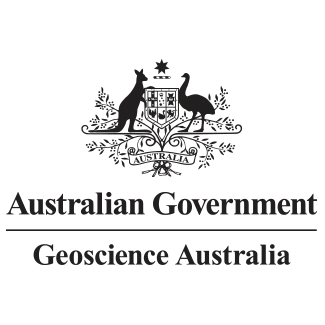Brief description
Iron oxide-copper-gold (IOCG) mineral systems are a desirable undercover exploration target due to their large alteration footprint and potentially high metal content. To assist in understanding the potential for IOCG mineral systems beneath cover in the Tennant Creek to Mount Isa region as part of Exploring for the Future, a predictive mineral potential assessment has been undertaken using a knowledge-based, mineral systems approach.
This mineral potential assessment uses a 2D, GIS-based workflow to qualitatively map four key mineral system components: (1) Sources of metals, fluids and ligands, (2) Energy to drive fluid flow, (3) Fluid flow pathways and architecture, and (4) Deposition mechanisms, such as redox or chemical gradients. For each of these key mineral system components theoretical criteria, representing important ore-forming processes, were identified and translated into mappable proxies using a wide range of input datasets. Each of these criteria are weighted and combined using an established workflow to produce the final map of IOCG potential, all of which is well documented in the accompanying IOCG Assessment Criteria Table.
Two assessments have been undertaken. The first is a comprehensive assessment containing all available geospatial information and is highly reliant on the level of geological knowledge. As such, it preferentially highlights mineral potential in well-understood areas, such as outcropping regions and performs less well in covered areas, where there is a greater likelihood of data gaps. The second assessment utilises only datasets which can be mapped consistently across the assessment area. As such, these are predominately based on geophysical data and are more consistent in assessing exposed and covered areas. However, far fewer criteria are included in this assessment.
Both assessment highlight new areas of interest in underexplored regions, of particular interest a SW-NE corridor to the East of Tennant Creek of moderate/high potential in the Barkly region. This corridor extends to an area of moderate potential in the Murphy Inlier region near the Gulf of Carpentaria on the NT/QLD border.
Lineage
Maintenance and Update Frequency: asNeededNotes
PurposeThis data release is intended to supply third parties to all the input and output data produced conjunction with the Tennant Creek- Mt Isa IOCG mineral potential assessment. Sufficient documentation is provided so that third parties can re-create and modify the process to produce the same or similar results.
Issued: 02 09 2019
Modified: 09 09 2019
Modified: 13 09 2019
Data time period: 2017-01-01 to 2019-04-16
text: westlimit=130.2539; southlimit=-22.5531; eastlimit=142.1191; northlimit=-13.1116; projection=GDA94 (EPSG:4283)
User Contributed Tags
Login to tag this record with meaningful keywords to make it easier to discover
Download the data package [98 MB]
uri :
https://d28rz98at9flks.cloudfront.net/130587/130587_00_1.zip![]()
Related product: Mapping iron oxide Cu-Au (IOCG) mineral potential in Australia using a knowledge-driven mineral systems-based approach
- DOI : 10.26186/5D6C90EBB0AE9

- URI : pid.geoscience.gov.au/dataset/ga/130587

- global : 68e003e7-0fac-4f32-be44-422013758c08


